You’ll find premium options like 18k gold and sterling silver offer lasting value and durability, while cost-effective brass and bronze alloys provide excellent alternatives for intricate designs without breaking your budget. Castable resins excel in lost wax casting with low ash content, and engineering SLA resins deliver exceptional strength for functional components. Consider your design complexity, production volume, and health safety requirements when selecting materials, as printer compatibility and calibration directly impact your final results and determine project success.
Gold: The Premium Choice for High-End Jewelry
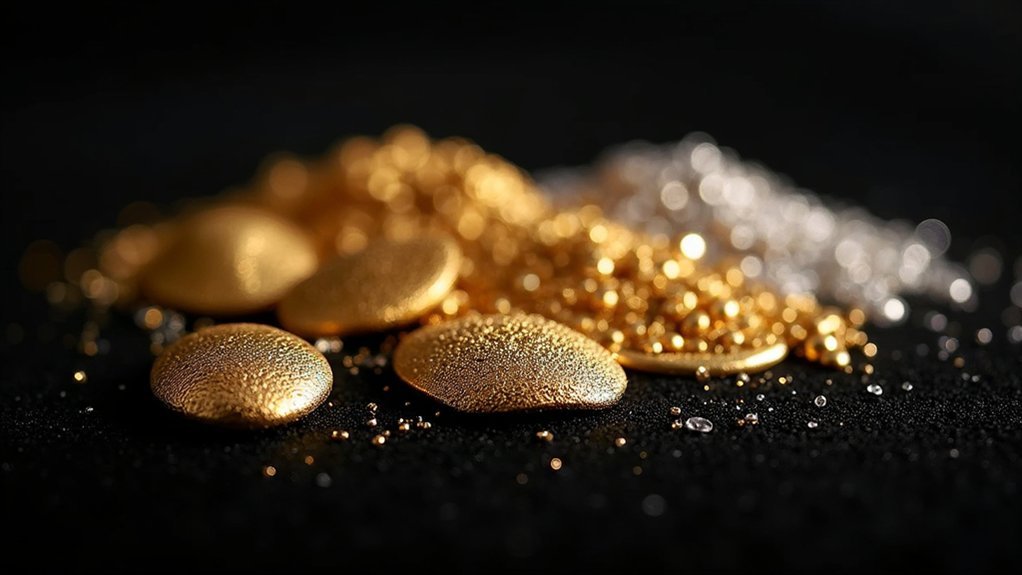
When you’re seeking the ultimate in luxury jewelry materials, gold stands as the unrivaled premium choice that delivers both exceptional beauty and lasting value.
You’ll find gold available in 14 and 18 karats, with 18k containing 75% pure gold for superior quality in high-end jewelry applications.
You can choose from three stunning color options: Yellow Gold for classic elegance, White Gold featuring palladium alloy for modern sophistication, or Red Gold with higher copper content for distinctive warmth.
When you select solid gold pieces, you’re investing in jewelry crafted entirely from your chosen karat—not gold-plated alternatives.
The durable material resists tarnishing and corrosion while maintaining its high gloss finish, ensuring your jewelry remains exquisite for generations.
Silver: Sterling Quality With Multiple Finish Options
You’ll find sterling silver offers an excellent balance of quality and affordability with its 92.5% silver composition that delivers both durability and that coveted lustrous shine.
This versatile material gives you four distinct finish options to match your design vision: polished for maximum detail and brilliance, hand polished for refined elegance, brushed for distinctive textured lines, or corundum blasted for a contemporary matte appearance.
Whether you’re creating classic elegant pieces or modern statement jewelry, sterling silver’s finish variety lets you achieve the exact aesthetic you’re targeting.
Sterling Silver Properties
The composition of sterling silver delivers exceptional strength while maintaining the lustrous beauty that makes silver jewelry so desirable.
You’ll find this 92.5% pure silver alloy mixed with 7.5% copper creates the perfect balance of durability and workability for complex jewelry designs.
When selecting finishes, you can choose from several options that affect your piece’s final appearance:
- Polished finish – Retains high level of detail with maximum shine and smooth surfaces
- Brushed finish – Creates distinctive textural lines that enhance visual interest
- Corundum blasted finish – Produces a contemporary matte appearance for modern aesthetics
Sterling silver’s affordability compared to gold makes it an excellent choice for creating intricate patterns without compromising quality.
You’ll appreciate how this versatile material allows designers to achieve sophisticated results while maintaining cost-effectiveness.
Available Finish Types
Each available finish transforms sterling silver’s appearance and tactile qualities in distinct ways, giving you creative control over your jewelry’s final aesthetic.
The polished finish excels at preserving intricate details while delivering maximum reflectivity, making it perfect for complex geometries and fine engravings. Hand polished models provide luxurious shine that elevates your piece’s visual appeal through superior surface smoothness.
For textural variety, brushed finishes create subtle linear patterns that catch light differently, offering sophisticated contrast to smooth surfaces.
Corundum blasted treatments produce uniform matte appearances that eliminate reflective hotspots entirely.
These available finish types let you customize how light interacts with your sterling silver jewelry, whether you’re emphasizing sharp edges, creating depth through texture, or achieving elegant uniformity across larger surface areas.
Brass: Cost-Effective Alloy With Versatile Applications
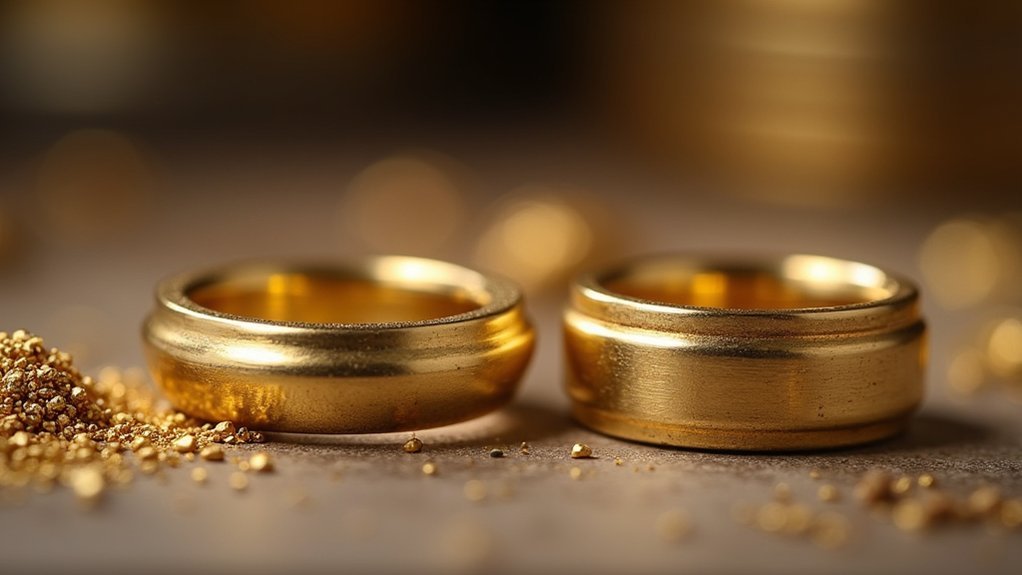
When you’re seeking an affordable yet attractive material for 3D printed jewelry, brass delivers exceptional value through its copper-zinc composition. This cost-effective alloy enables you to create intricate designs without breaking your budget, making it perfect for detailed pieces that would be expensive in precious metals.
Brass offers three key finishing options for versatile applications:
- Raw finish – Natural appearance that develops patina over time
- Polished finish – Yellow-gold look that mimics expensive gold jewelry
- Color-plated options – Red-gold and black varieties for unique aesthetics
You’ll find that polished brass particularly appeals to fashion-conscious customers who want gold’s appearance at a fraction of the cost.
While raw models may oxidize, applying PU coating protects against scratches and oxidation, considerably enhancing your jewelry’s durability.
Bronze: Durable Copper-Based Material for Everyday Wear
You’ll find bronze offers exceptional value as a copper-based alloy that’s both affordable and built to last through daily wear.
The material naturally develops a distinctive patina as it oxidizes over time, giving your pieces unique character while remaining unprotected against surface scratches.
You can enhance bronze’s durability by applying a PU coating that shields against both oxidation and scratching, greatly extending your jewelry’s lifespan.
Bronze Composition Properties
Although bronze has been valued for millennia, its composition makes it particularly well-suited for modern 3D printed jewelry applications.
You’ll find that bronze’s unique properties stem from its carefully balanced alloy composition, typically combining 90% copper with 10% tin to create a material that’s both durable and workable.
The key properties that make bronze exceptional for jewelry include:
- Enhanced strength and malleability – allowing for intricate designs while maintaining structural integrity
- Natural corrosion resistance – superior to pure copper, ensuring your pieces last longer
- Warm golden hue – providing an affordable alternative to gold with similar aesthetic appeal
You can further protect your bronze jewelry with PU coatings to prevent oxidation, while magnetic tumbling techniques enhance the surface quality for everyday wear.
Oxidation and Protection
Since bronze contains a high percentage of copper, your 3D printed pieces will naturally develop oxidation over time when exposed to air and moisture.
This oxidation creates a distinctive patina that you might actually find appealing, giving your jewelry a vintage, weathered appearance.
However, if you prefer maintaining the original bronze finish, you’ll need to apply a protective coating like PU (polyurethane).
This coating effectively prevents oxidation while also protecting against scratches and daily wear damage.
For enhanced visual appeal, you can use polishing compounds with a magnetic tumbler to achieve a shinier surface finish.
While bronze requires occasional maintenance through polishing or recoating, these simple steps will preserve your jewelry’s aesthetic qualities and extend its lifespan considerably.
Castable Resins: Essential Properties for Lost Wax Casting
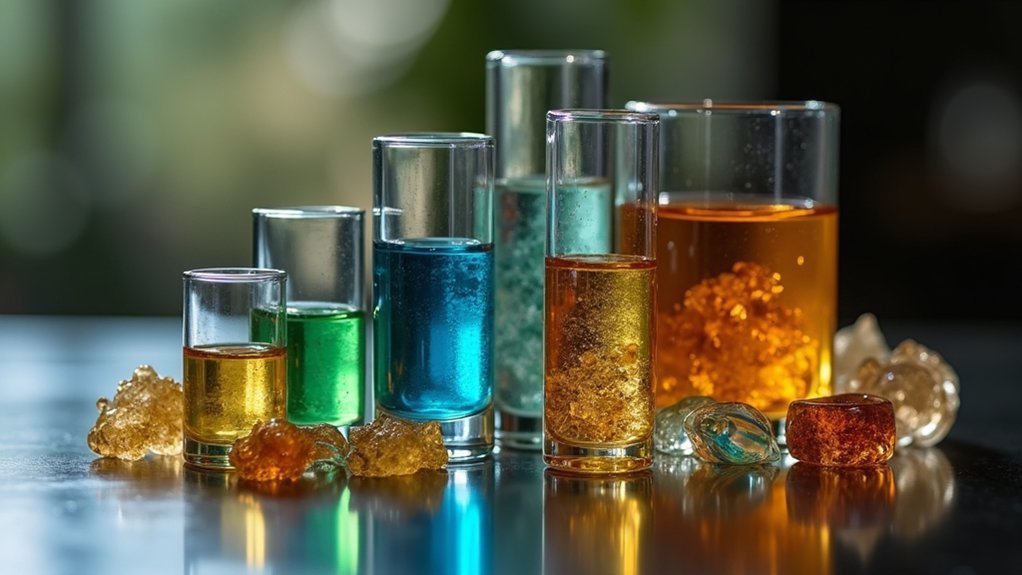
When you’re selecting castable resins for jewelry printing, the material’s ability to burn out cleanly becomes the most critical factor determining your casting success. High-quality castable resins achieve ash content as low as 0.0-0.1%, ensuring your investment remains residue-free and your final metal pieces retain their intended detail.
The essential properties you’ll need include:
Three critical castable resin properties: minimal shrinkage for accuracy, high-resolution detail capture, and smooth finishes that eliminate additional processing steps.
- Low shrinkage rates – Maintains dimensional accuracy throughout the printing and casting process
- High-resolution capabilities – Captures sharp lines and fine textures for intricate jewelry designs
- Smooth surface finish – Eliminates post-processing requirements and preserves delicate details
Modern castable resins work seamlessly with LCD or DLP printers, avoiding calibration headaches. Low-quality alternatives create inconsistent burnout results, potentially compromising your entire casting.
Invest in tested, reliable resins to protect your craftsmanship.
Standard SLA Resins: Basic Materials for Prototyping
Three key advantages make standard SLA resins your go-to choice for jewelry prototyping: affordability, reliability, and versatility.
You’ll achieve high-resolution prints with exceptional detail capture, perfect for intricate jewelry designs requiring sharp lines and fine features. These resins deliver low shrinkage rates, ensuring your prototypes maintain dimensional accuracy throughout the casting process.
You’ll appreciate the clean burnout properties that leave minimal ash residue, preserving every delicate detail in your final pieces. The smooth surface finish rivals traditional molding techniques, greatly reducing your post-processing time and effort.
While standard SLA resins work across various printer types, you’ll get ideal results using LCD or DLP printers for consistent, reliable outcomes in your jewelry prototyping workflow.
Engineering SLA Resins: High-Performance Materials for Functional Parts
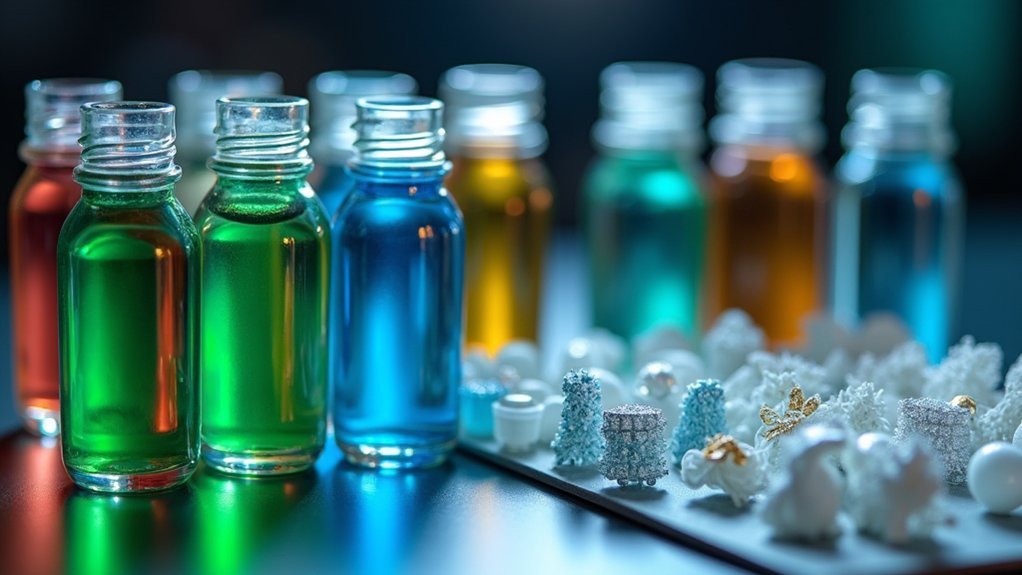
Engineering SLA resins deliver the mechanical properties and durability that standard materials simply can’t match when you’re creating functional jewelry components.
These high-performance materials excel in applications requiring exceptional strength and reliability while maintaining an intricate finish.
When selecting engineering SLA resins for jewelry applications, you’ll find three standout options:
- Tough Resin – Provides 55.7 MPa tensile strength with shatter-resistant properties for high-stress jewelry mechanisms like clasps and hinges.
- Durable Resin – Mimics polypropylene flexibility, perfect for wearable pieces requiring bend resistance and long-term wear durability.
- Heat Resistant Resin – Withstands temperatures up to 300°C, ideal for creating investment casting patterns and jewelry production tooling.
These engineering materials transform functional jewelry manufacturing by combining mechanical performance with precision detail reproduction.
Printer Compatibility and Resolution Requirements
When you’re selecting a 3D printer for jewelry production, you’ll need to choose between LCD and DLP technologies, both of which excel with photopolymer resins but offer different advantages for precision work.
Your printer must achieve at least 0.050 mm XY resolution to capture the intricate details that jewelry demands, from fine textures to sharp geometric patterns.
You’ll also need to master calibration techniques since even minor setup errors can compromise your final pieces and waste expensive castable materials.
LCD Vs DLP Printers
Although both LCD and DLP printers can produce exceptional jewelry pieces, you’ll find significant differences in their compatibility requirements and resolution capabilities that directly impact your material choices.
When selecting between these technologies, consider these key factors:
- Speed vs. Resolution Trade-off – LCD printers offer faster printing speeds through UV light masking, while DLP printers typically deliver superior resolution around 0.050 mm (XY) for high detail work.
- Resin Compatibility – Each technology requires specifically formulated resins that need careful tuning to avoid calibration issues and guarantee reliable results.
- Surface Quality – DLP’s pixel-based curing method produces better surface finishes, though LCD printers provide more cost-effective solutions for small-scale operations.
Both technologies’ resins offer excellent burnout performance, achieving 0.0–0.1% ash content for ideal print quality in casting applications.
Critical Resolution Standards
Resolution requirements form the foundation of successful jewelry printing, with specific standards determining whether your printer can handle the intricate details that define quality pieces.
You’ll need a critical resolution of around 0.050 mm (XY) to maintain the fine details essential for professional jewelry applications. This specification isn’t negotiable—anything coarser will compromise delicate features like filigree work, stone settings, and surface textures.
When selecting equipment, verify your printer’s capabilities align with your chosen materials. High-performance resins demand precise calibration and consistent layer adhesion to achieve excellent results.
You must confirm that your resin formulation is tailored for your specific printer model, as mismatched combinations lead to calibration issues and unreliable outcomes that can ruin expensive materials and waste production time.
Calibration Best Practices
Since printer compatibility directly impacts your calibration success, you must verify that your chosen resin works seamlessly with your LCD or DLP printer before beginning any jewelry project. Mismatched materials lead to failed prints and wasted time.
Your printer calibration routine should include these essential steps:
- Resolution verification – Maintain 0.050 mm (XY) precision to capture intricate textures and fine details in your designs.
- Build volume alignment – Check that your printer’s dimensions match your jewelry piece specifications to prevent scaling errors.
- Regular calibration testing – Run test prints weekly to catch setting variations that could compromise detail retention.
Consistent printer calibration guarantees your resin cures properly and delivers the exceptional quality your jewelry customers expect. Don’t skip these verification steps.
Surface Finish Quality and Dimensional Accuracy
When selecting 3D printing materials for jewelry production, you’ll find that surface finish quality and dimensional accuracy serve as the cornerstone metrics that determine your final piece’s professional appearance and fit. High-resolution materials notably reduce visible layer lines while achieving smoother finishes that require minimal post-processing.
Low shrinkage rates in castable resins guarantee your final metal pieces match intended specifications precisely. SLA resins deliver superior smoothness compared to FDM methods, creating professional results with exceptional detail retention.
| Material Characteristic | Impact on Quality |
|---|---|
| Resolution | Reduces layer visibility |
| Shrinkage Rate | Maintains dimensions |
| Resin Formulation | Affects surface smoothness |
| Burnout Behavior | Preserves fine details |
| Ash Content | Guarantees clean casting |
Consistent testing of burnout behavior guarantees low ash content while preserving intricate design elements throughout the casting process.
Burnout Behavior and Ash Content Testing
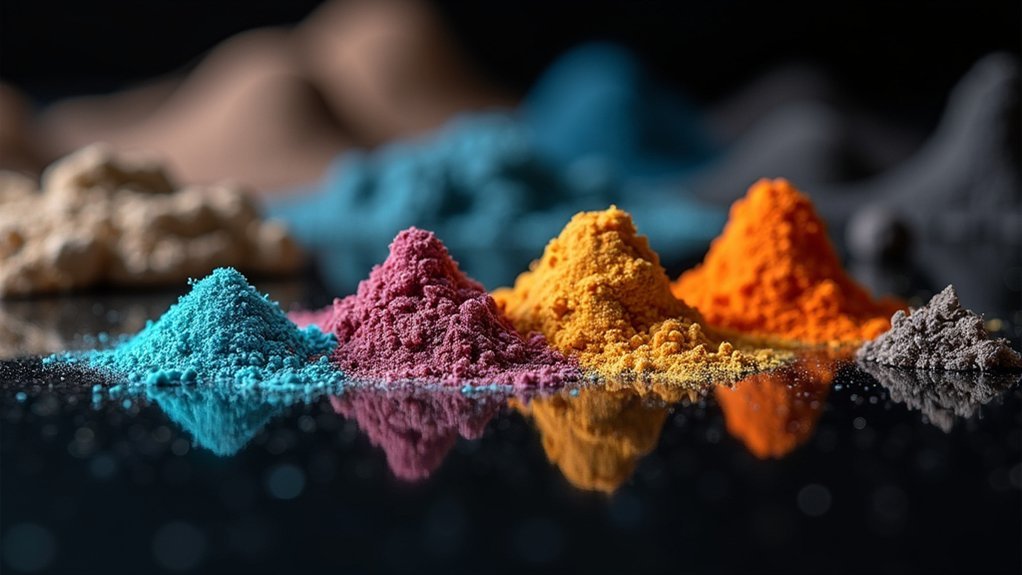
Here’s what you should prioritize when evaluating burnout performance:
- Clean combustion properties – Your resin must melt and burn completely without leaving problematic residuals.
- Low shrinkage rates – Maintaining dimensional accuracy throughout the burnout process prevents casting failures.
- Consistent burnout behavior – Reliable performance across multiple heating cycles guarantees predictable results.
Health Safety Considerations and Material Selection
Beyond achieving ideal burnout performance, you must prioritize your health safety considerations when selecting jewelry printing materials.
Choose low-odor or odorless resins like Phrozen brands to enhance comfort during printing sessions. Always work in well-ventilated areas and wear protective gloves, especially with budget materials containing harmful monomers.
Prioritize low-odor resins and proper ventilation while wearing protective gloves to ensure safe jewelry printing sessions.
High-quality castable resins burn out cleanly, leaving minimal ash that could compromise your health through toxic residue.
Look for manufacturers who provide thorough safety data sheets (SDS) – this transparency indicates their commitment to user safety and helps you make informed decisions.
When each resin offers different capabilities, prioritize materials with high-resolution performance and low shrinkage.
This guarantees you’ll achieve intricate details safely while protecting your health throughout the entire jewelry creation process.
Choosing Materials Based on Design Complexity and Production Scale
Your design complexity and production volume directly dictate which materials will deliver excellent results for your jewelry projects.
When you’re creating intricate designs requiring high detail, castable resins like Phrozen Castable Resin W20 Green excel with low shrinkage and clean burnout properties. For larger statement pieces, brass and bronze provide cost-effective durability without compromising pattern complexity.
Consider these material strategies for exceptional results:
- High-detail pieces: Use specialty castable resins for complex geometries and fine features
- Large-scale production: Choose standard SLA resins for rapid prototyping and consumer feedback cycles
- Statement jewelry: Select brass or bronze for affordable malleability in bigger designs
At production scale, balance material availability with cost-effectiveness.
While brass and silver suit larger batches economically, specialty resins work best for limited high-detail runs.
Frequently Asked Questions
Is PLA or ABS Better?
You’ll find PLA’s better for decorative pieces since it’s easier to print and finish. However, you should choose ABS if you’re making functional jewelry that needs durability and heat resistance.
What Is the Highest Quality 3D Print Material?
You’ll find castable resins offer the highest quality for 3D printing, with materials like Phrozen Castable Jewelry Violet providing exceptional precision, minimal shrinkage, and clean burnout for intricate designs.
What Is the Best Material for SLA?
You’ll want Phrozen Castable Jewelry Violet Resin for SLA printing. It’s designed for jewelry work, offers exceptional detail accuracy, minimal shrinkage, and burns out cleanly with virtually no ash residue.
What Filament Gives the Smoothest Finish?
You’ll get the smoothest finish with PETG due to its inherent glossy properties. Metal-filled PLA also polishes beautifully for jewelry. Don’t overlook proper post-processing techniques like sanding and clear coating.
In Summary
When you’re selecting jewelry printing materials, you’ll need to balance your design requirements, budget constraints, and production goals. You can’t go wrong with gold for luxury pieces, while silver offers versatility at moderate cost. If you’re working with tight budgets, brass and bronze provide excellent alternatives. Don’t overlook castable resins for complex geometries requiring lost wax casting. Always prioritize surface quality, dimensional accuracy, and safety considerations when making your final material choice.

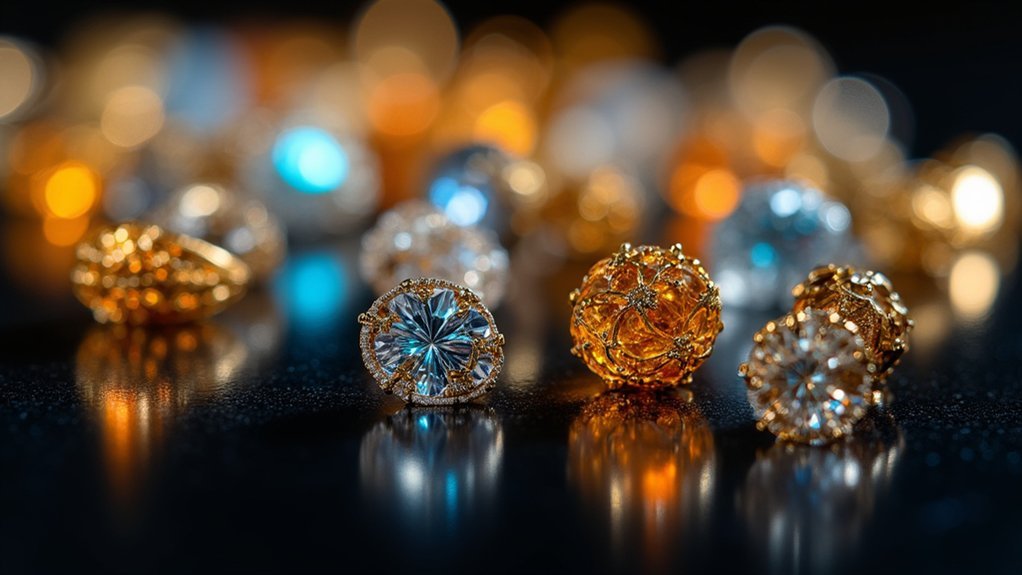
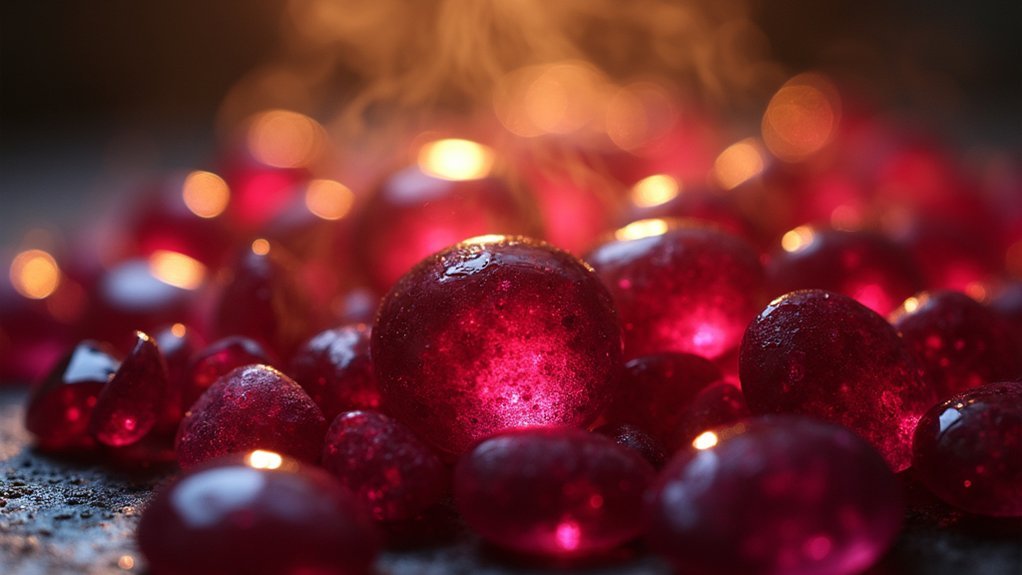
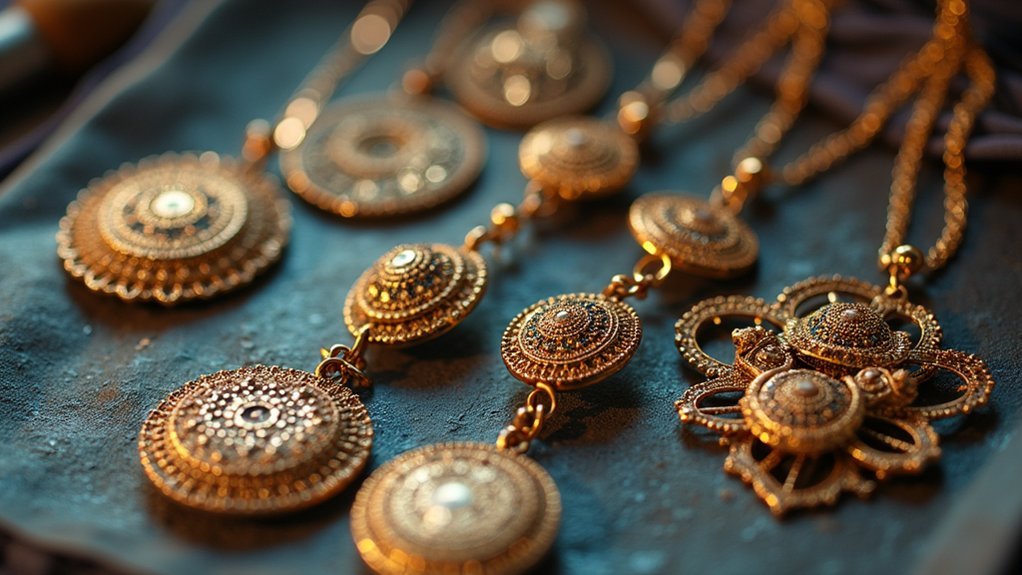
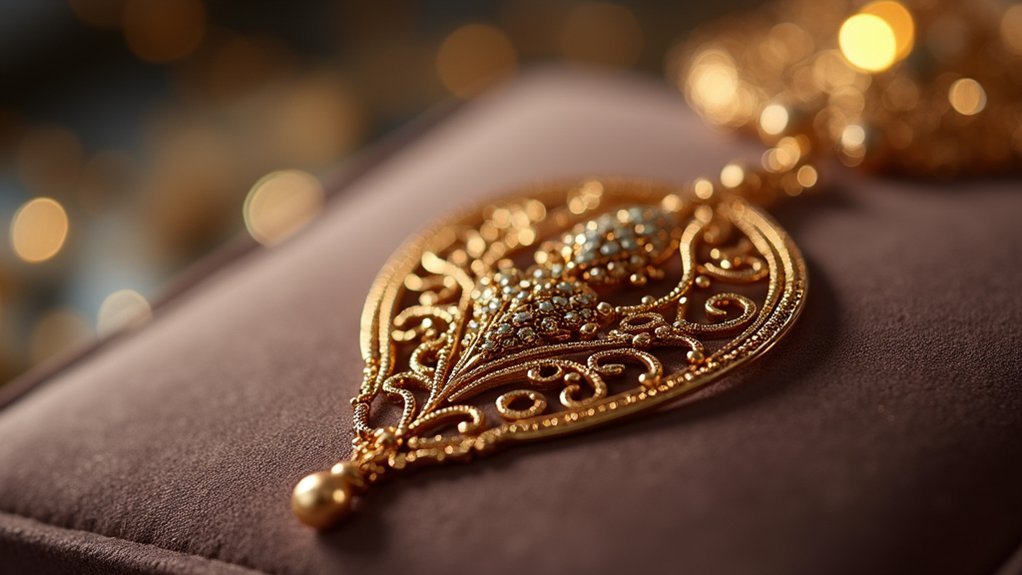
Leave a Reply